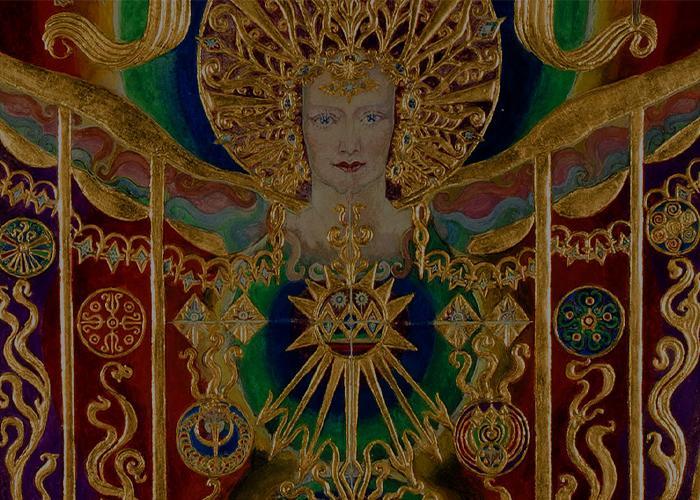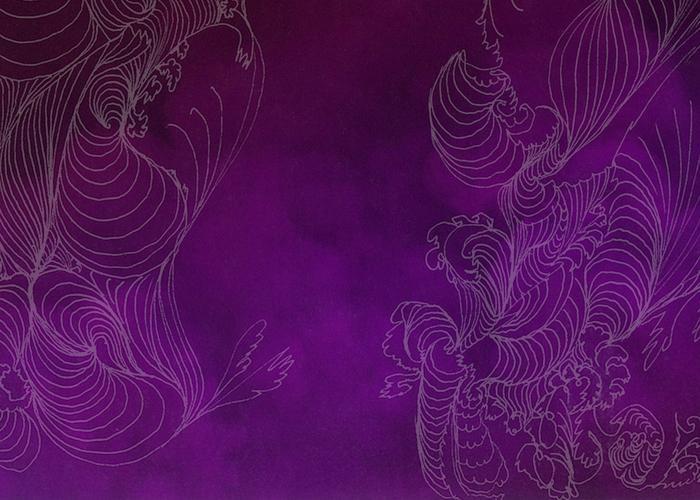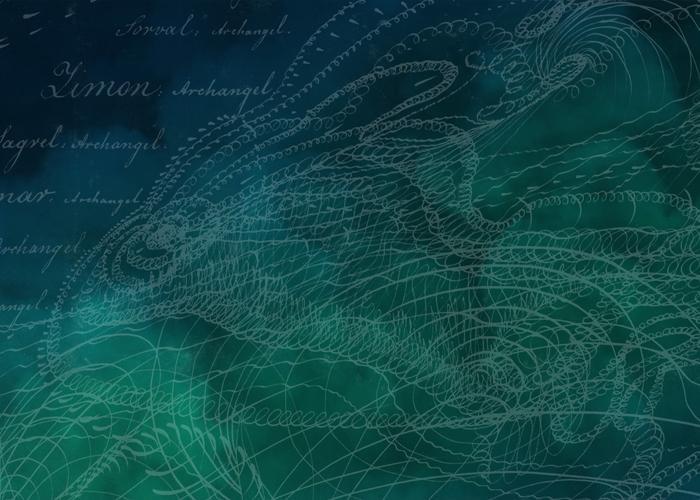We tend to regard sightings of strange objects or lights in the sky as a comparatively modern phenomenon, with 1947 often cited as the first year of the "flying saucer" era. Yet unexplained aerial objects were being reported in the skies of Britain and Europe in the very year that the first issue of Light, The College of Psychic Studies' journal, was published: 1881.
Lights in the sky
On 10th December of that year, the unfortunate exploits of Walter Powell, Tory MP for Malmesbury, Wiltshire, and a keen balloonist, led to people scouring the skies. He had joined two others for a long flight in a new military balloon, named Saladin, which travelled south-west from Bath across Devon and Cornwall before making a rapid emergency landing when the occupants realised they were about to drift out over the ocean.
His two companions were thrown out but the Saladin, now much lighter, immediately ascended with Powell still onboard. Press accounts of the incident resulted in numerous reports of people seeing lights in the sky – from Scotland to Spain and various other locations. Each witness assumed they had seen the missing balloon.
But given the geographic spread, they couldn't all have seen the Saladin, so what did they see? Intrigued, American writer Charles Fort, an obsessive collector of strange events, published these reports in his 1925 book New Lands which dealt with astronomical anomalies.
Powell and the military balloon that carried him off were never found.
Official sightings on the rise
Similar inexplicable sightings continued into the 20th century including, notably, lights – nicknamed "foo fighters" – that followed military aircraft during World War Two in a way that suggested they were intelligently controlled and responding to the pilots' manoeuvres.
By the 1950s, sightings were on the increase around the world and governments, and even the United Nations, began to take unidentified flying objects (UFOs) seriously. The United States conducted various official investigations without coming to conclusions that satisfied believers and critics, and other countries made similar efforts to identify them.
Air Chief Marshal Hugh Dowding who, as head of the British Royal Air Force Fighter Command, played a key role in defeating Germany's air attack on the UK in the Battle of Britain, was among those who challenged official denials.
"More than 10,000 sightings have been reported, the majority of which cannot be accounted for by any 'scientific' explanation," Lord Dowding declared on his retirement. He went on to become a Spiritualist who wrote extensively about the spirit communications he received in his home circle.

The claim that a UFO crashed at Roswell, New Mexico, in 1947, resulting in the recovery of a craft and its occupants, is believed by millions to this day, despite official denials. Whether true of not, it has reinforced the "nuts and bolts" explanation of UFOs which asserts they are extraterrestrial craft piloted by aliens who are closely monitoring Earth.
Reliable and confirmed reports of UFOs hovering over nuclear silos at military bases and even disarming the missiles' warheads lend weight to that interpretation. Numerous literary and cinematic versions of these alien scenarios have seeped into the collective subconscious to the point where they have shaped the worldview on UFOs.
But there are alternative explanations, apparently supported by evidence even stronger than the Roswell event, that are proving to have even greater appeal than the arguments of the "nuts and bolts" brigade.
Increasingly during the 20th century, eye-witness accounts of sightings, close encounters and even abductions began introducing – if true – new non-physical elements into the cosmic enigma.
Some individuals said they had been taken for rides in flying saucers. Others claimed to be able to channel ETs living on planets in our solar system or elsewhere in the Universe, just as mediums channel spirit guides.
Even more – literally tens of thousands – believe they have experienced some form of contact with aliens or "off-planet intelligencies". These individuals used to be referred to as "contactees" but "experiencers" is now the more common terminology. And what they claim to experience ranges from ethereal visitations and telepathic communications to, occasionally, sexual encounters.

Jacques Vallée, a UFO pioneer
Jacques Vallée, an astronomer and computer scientist as well as one of the world's most respected UFO researchers, has remarked on elements of the absurd that manifest in many of the reports. He has also called for a "bridge" to be built between the huge body of physical UFO data and the evidence for psychic phenomena.
In his book The Invisible College (1975), he argues that "such a bridge is needed, not only because current research on parapsychology could help explain some of the more mystifying UFO incidents, but also because an understanding of the nature of the UFO phenomenon could provide new insights into unusual events that have not yet been duplicated in the laboratory".
For those of us attempting to understand the nature of the UFO phenomenon and reach our own conclusions, it's certainly as challenging as embarking on a conclusive assessment of spiritual, mediumistic and parapsychological phenomena.
Spiritualism, near-death experiences, reincarnation or psychokinetic powers are all important and legitimate areas of investigation, but seasoned researchers recognise that personal testimony can sometimes be influenced, deliberately or subconsciously, by preconceived ideas or other factors.
In a way, the UFO phenomenon is as illusive and frustrating as physical phenomena produced in a séance. Darkness is usually necessary for the production of ectoplasm. There have been notable exceptions to that rule, but generally it is this requirement that casts doubts over the authenticity of photographic images produced at such séances since the darkness also enables dishonest "mediums" to trick grieving sitters – and the camera – with hidden props.
Similarly, my assessment is that the majority of "flying saucer" photographs or videos that have been published in the media or online are not genuine. Yet many people base their belief in UFOs on those faked or digitally-manipulated images.
UFO sightings hit the media
Now, however, thanks to the very sophisticated 21st-century technology carried on today's jet interceptors, the reality of the UFO phenomenon might soon be proved beyond doubt, perhaps ultimately confirming the belief of 39 percent of Americans that we are being visited by aliens.
Between 2007 and 2012, the US Government spent £16.5 million ($22m) a year on a secret UFO study named AATIP – changing the phenomenon's description to unidentified aerial phenomena (UAP) in the process. What it discovered is still largely under wraps but the data collected included three videos taken by US Navy pilots on exercises from aircraft carriers operating off America's east coast.
These short movies with the pilots' astonished commentaries found their way surreptitiously into the New York Times in December 2017. The Department of Defense eventually confirmed they were authenticate videos and, finally, in April 2020, the Pentagon even released them officially to the media "in order to clear up any misconceptions by the public on whether or not the footage that has been circulating was real, or whether or not there is more to the videos".
The statement added that after a thorough review, it has "determined that the authorised release of these unclassified videos does not reveal any sensitive capabilities or systems and does not impinge on any subsequent investigations of military air space incursions by unidentified aerial phenomena."

An official confirmation
So, for the first time, a government has confirmed the reality of a phenomenon it has consistently dismissed yet secretly studied for decades by releasing videos, that it confirms are authentic, of an unknown phenomenon.
In doing so, however, it offers no explanation for the fast-moving objects its pilots have captured on their videos because, it seems, it has no idea what is flying around in the protected airspace above America and other countries on this planet.
In an attempt to find answers, Republican senator Marco Rubio, Acting Chairman of the Senate Intelligence Committee, called in April 2020 for the establishment of an Unidentified Aerial Phenomena Task Force, spearheaded by the Department of the Navy and working with America's 17 intelligence organisations.
Not only did his Intelligence Authorisation Act for Fiscal Year 2020 receive Senate approval but it was buried within a 5,560-page emergency relief bill that was signed by President Trump at the end of December 2020. It includes a requirement for the new Task Force to produce a mostly unclassified report for public consumption within six months, so early July 2021 could see the start of a long-awaited disclosure programme.
Optimists believe this will lift the veil of secrecy that has surrounded the phenomenon for more than 70 years.
A report "for public consumption"?
Will we be told UFOs are alien craft piloted by beings from elsewhere in the Universe – keeping a safe distance from an earthly population that appears not to live in harmony with itself or with other aspects of nature on our beautiful planet? Soon we might have the answer.
However, let me conclude with another quote from French UFO expert Jacques Vallée – the inspiration for one of the scientists in Steven Spielberg's Close Encounters of the Third Kind:
"From my own point of view, I am going to be very disappointed if UFOs turn out to be nothing more than visitors from another planet because I think they can be something more interesting.
"I think what the UFO phenomenon is teaching us is that we don't understand time and space. Here are objects that are physical, that interact with our environment, that cause effects on witnesses, on the psychology and physiology of the witness, that leave traces on the ground, and yet appear to be capable of being able to manipulate time and space in ways that go beyond what our physics understand today.
Images: A shelf from Roy Stemman's library; books displayed in our Strange Things Among Us exhibition; UFO Art and Science by Ionel Talpazan 2001, College Collection; UFO Self Portrait by Ionel Talpazan 2005, kindly lent by Adam Whitaker; all included in our Strange Things Among Us 2021 summer exhibition.
Loved this article? Join our newsletter to receive more like it, alongside updates on our exhibitions, competitions and courses.




